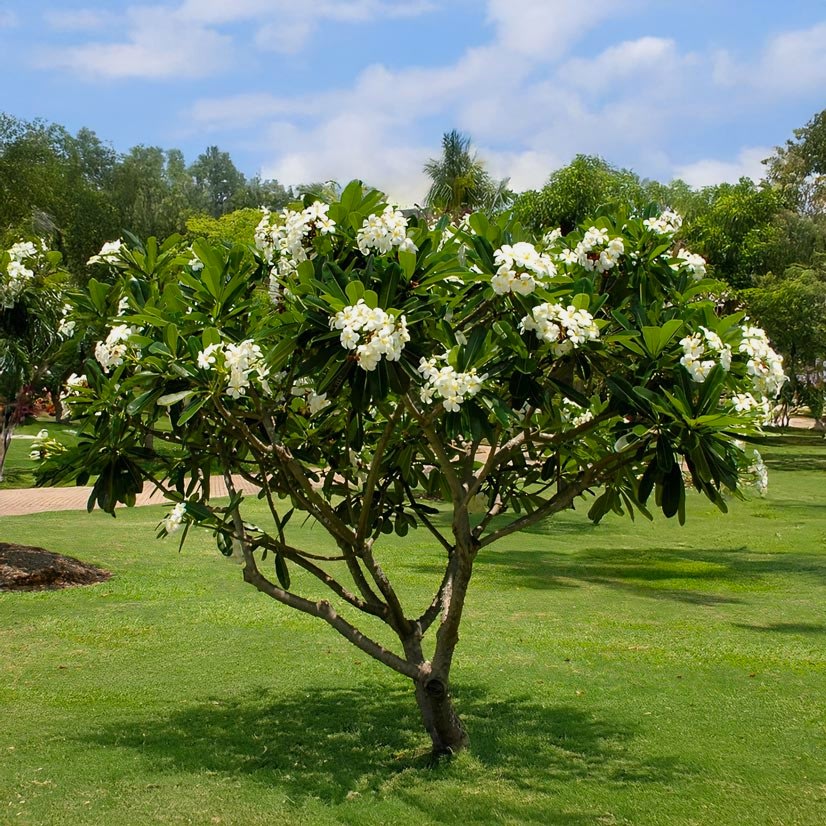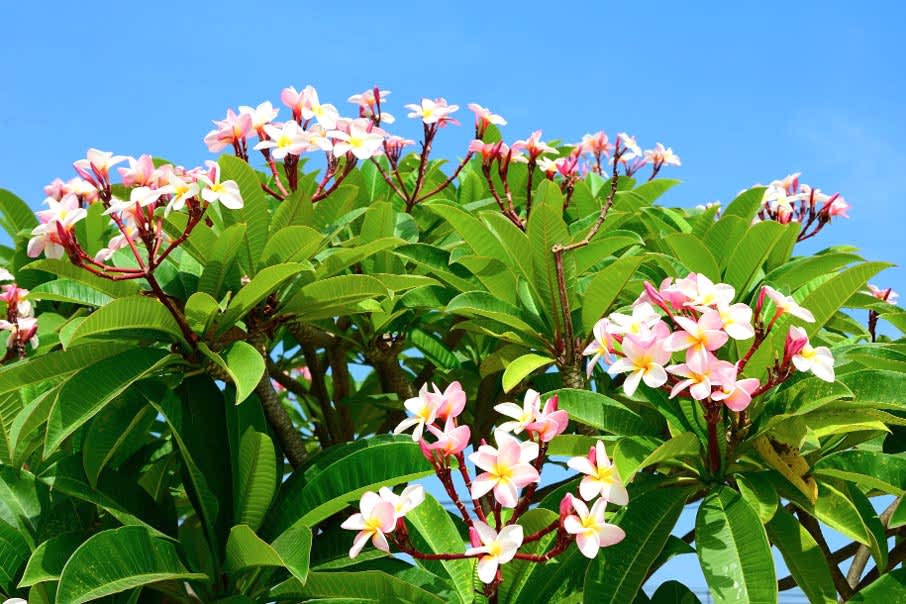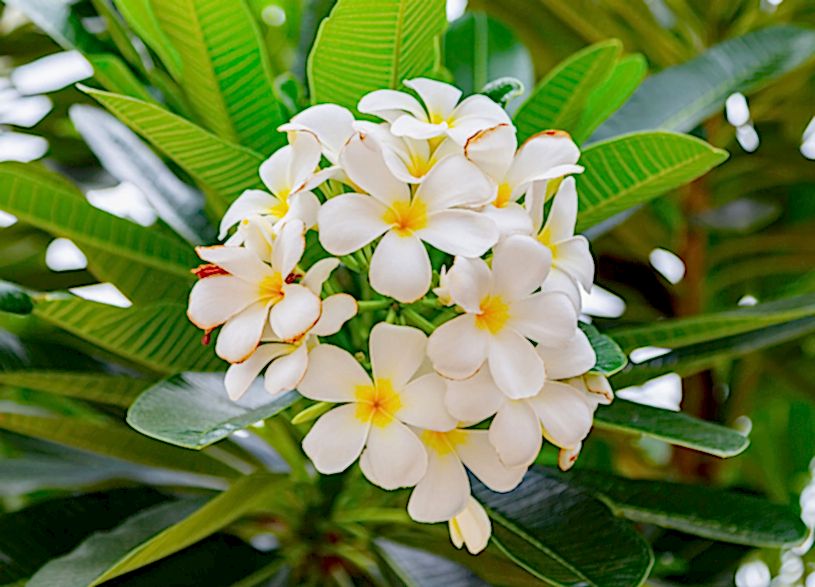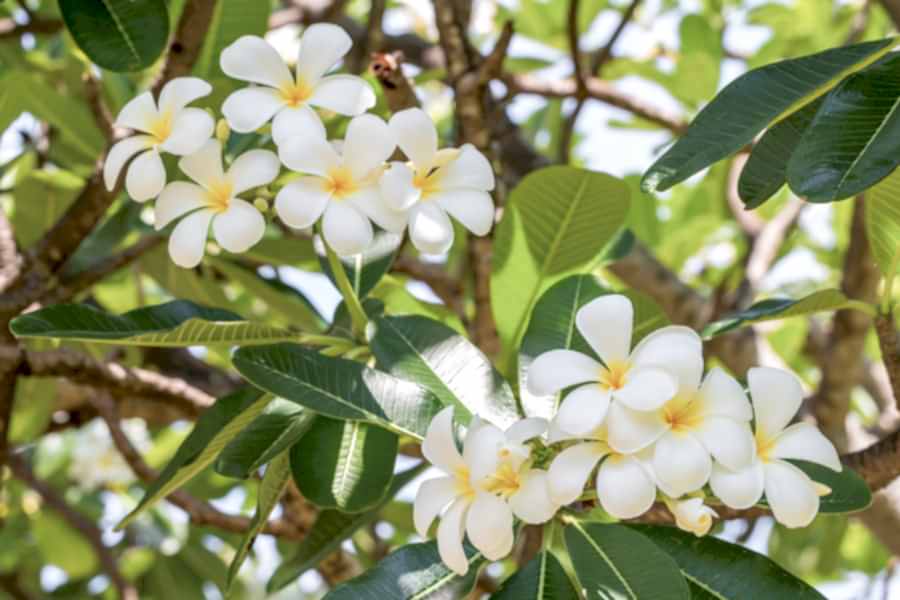Looking to bring a splash of tropical flair to your garden? Plumeria, also known as frangipani, could be exactly what you need. With its captivating fragrance, vibrant blooms, and easygoing nature, this stunning plant thrives in warm, sunny climates-making it an ideal choice for gardens in Cyprus and across the Mediterranean.
Here’s why plumeria deserves a spot in your garden, from its striking beauty to the little care it asks for in return.
What’s So Special About Plumeria?
Plumeria is a showstopper, plain and simple. Its clusters of star-shaped flowers come in shades of white, pink, yellow, red, and orange, each giving off a sweet, intoxicating scent that intensifies in the evening. These blooms are the ones you often see in tropical flower leis, symbolizing welcome and beauty, and they bring that same inviting feel to your garden.
The leaves? Glossy, green, and full, creating a perfect contrast with the vibrant flowers. And as the plant grows, it takes on a sculptural form that can serve as an eye-catching focal point in any outdoor space.

How to Keep Plumeria Happy in the Mediterranean Sun
The great thing about plumeria is how well it fits with the Mediterranean climate. Here’s what it needs to feel right at home:
Sunlight: Plumeria is a sun-worshipper. Give it a spot that gets at least 6-8 hours of direct sunlight, and it’ll reward you with beautiful blooms. This is a plant that loves to soak up the rays.
Soil: Good drainage is key. Plumeria thrives in sandy or slightly rocky soil, which prevents its roots from sitting in water. You can improve drainage by adding a bit of perlite or sand to your soil mix.
Watering: While plumeria can handle dry conditions, it appreciates a bit of regular watering during its active growing season (spring through summer). Just remember—it doesn’t like soggy roots, so let the soil dry out a bit between watering.
Temperature: This plant loves the warmth but can tolerate cooler temps in the winter. When temperatures dip below 10°C (50°F), plumeria may drop its leaves and go dormant, but it’ll bounce back in spring. For areas that get colder, potted plumerias can easily be moved indoors for the winter.
Fertilizer: Plumeria enjoys a phosphorus-rich fertilizer to keep those blooms coming. Feed it every 2-4 weeks during spring and summer for the best flower production.
Planting Choices: Ground or Pot?
Plumeria offers flexibility in how it can be planted, which makes it a great choice for various garden setups.
In the Ground: Planted directly in the soil, plumeria can grow into a small tree over time. Just make sure it has enough room to spread out, as it can reach up to 6 meters in height in ideal conditions.
In Pots: Plumeria also thrives in large containers, perfect for patios or smaller gardens. Keeping it in a pot also lets you move it around to catch the best sunlight or to bring it indoors during colder months.
With a pot, you get the best of both worlds: a striking plant that you can position wherever it looks best in your space.

Why Plumeria Is a Smart Addition to Your Garden
Aside from its beauty, plumeria brings some practical benefits to your garden.
Fragrance: Few garden plants can compete with the heavenly scent of plumeria. It creates a naturally inviting atmosphere that’s perfect for entertaining or simply unwinding at the end of the day.
Attracts Pollinators: Plumeria’s flowers are a magnet for bees, butterflies, and, in some areas, hummingbirds. By planting plumeria, you’re not just beautifying your garden-you’re supporting local pollinators and helping the ecosystem thrive.
Drought-Friendly: Once established, plumeria is fairly drought-tolerant, fitting right into the Mediterranean gardening philosophy of choosing plants that work with the climate, not against it.

Quick Tips for Keeping Plumeria Thriving
Plumeria is low-maintenance, but there are a few things to keep in mind to help it look its best:
Pruning: Trim your plumeria in late winter or early spring to encourage new growth and maintain its shape. Remove any dead branches and keep it tidy.
Pest Patrol: While plumeria is generally pest-resistant, it can sometimes attract aphids, mealybugs, or spider mites. A quick rinse with water or a mild insecticidal soap should keep these pests in check.
Cold Protection: If you’re in an area with occasional frost, protect your plumeria by covering it or bringing it indoors for the season. Potted plumeria is particularly easy to move, making it a flexible choice for colder months.

Is Plumeria a Sustainable Choice?
Plumeria is a great option for eco-conscious gardeners. Once established, it doesn’t need a lot of water, making it ideal for Mediterranean climates that experience dry summers. Plus, by attracting bees and butterflies, plumeria supports local pollinators, contributing to a healthy ecosystem. So, while it beautifies your space, it also brings a touch of sustainability.
Bring Paradise to Your Garden
Plumeria isn’t just a plant—it’s an experience. From its exotic scent to its eye-catching blooms, this plant has the power to transform your outdoor space into a mini tropical escape.
Thinking about adding plumeria to your garden? The Gardeners can help you select, plant, and care for it to make sure it thrives. Whether you’re planning a full garden redesign or just want to add a bit of tropical flair, contact us for expert guidance. And for more plant insights, tips, and inspiration, head over to our blog where there’s plenty more to explore! 🌿

